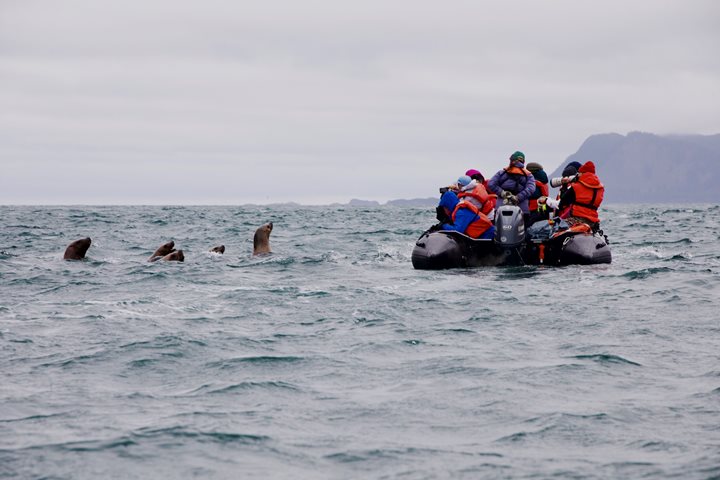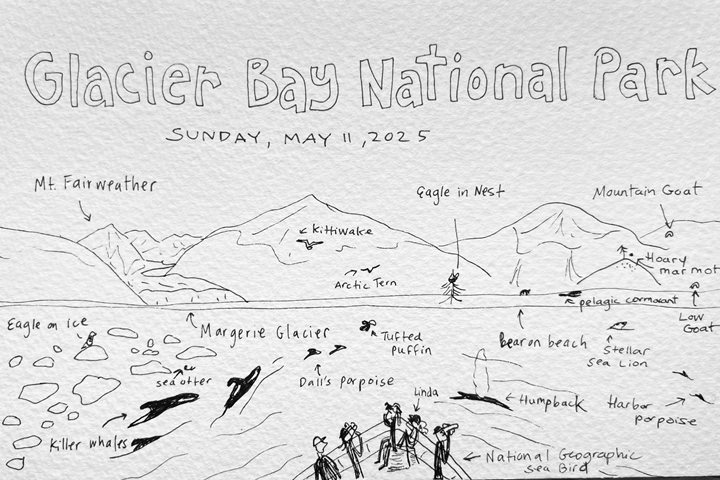After a few days of sunny weather, guests aboard National Geographic Sea Bird woke to some typical Pacific Northwest weather of overcast and light drizzle: perfect weather for one to get an idea of why the temperate rainforest occurs where it does. This habitat stretches from northern California to Seward, Alaska, on the Kenai Peninsula. Warm, moist air moves over the ocean, meets land, then rises and cools. As the air cools and condenses, the land is coated with at least 75 cm of rain a year—in some places, much, much more!
This weather didn’t keep people from enjoying the morning stretch class or spending time on the bow in search for wildlife. The rain brought a calm kind of energy to the ship. We slowly, intentionally moved about the public spaces. We watched the mist dance around between the canopy of the cedar and spruce trees. We spotted the occasional pair of marble murrelets, as well as a pair of Western grebes, harlequin ducks, a variety of gulls, a few Steller sea lions, and the highlight: good views of a feeding humpback whale.
In the morning we listened to a presentation on fish farms, fish ranching, and native fish runs of the Pacific Northwest. This informative talk gave people a strong foundation and good understanding of the differences between these terms, and what they mean for the health of the fish and the health of the landscape.
Following lunch, we loaded onto some vehicles to explore Jackson Passage. Some loaded onto sit-on-top kayaks. Others loaded into expedition landing craft to explore the region. Still others had the opportunity to explore using both—just not at the same time. We toured around and were able to get up close and personal to the coast, the intertidal zone, and the rainforest itself. We heard and observed sandhill cranes. This was a wonderful tour and beautiful introduction to the natural history of this part of the world!







